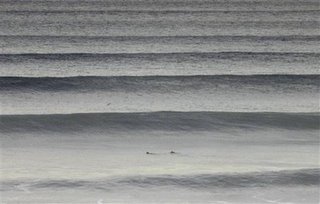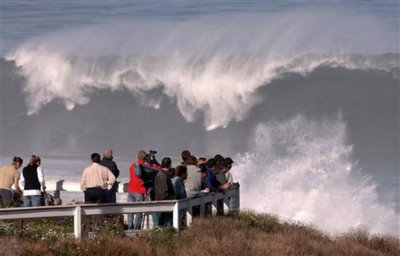Friday's Fact
What’s the distance across the world’s widest part of the ocean?
What’s the distance across the world’s widest part of the ocean?
Did Thomas Watson start IBM from scratch?
· lacrimal or aqueous layer, and
· mucoid or mucin layer
The number of impacted products was among the largest ever for a single vulnerability, and demonstrated the risk of reusing code in a large group of programs.
The bug, which was made public Tuesday by researcher Alex Wheeler, is in how Symantec's AntiVirus Library, part of virtually all the Cupertino, Calif.-based security giant's programs, handles RAR compressed files. RAR files are created by the WinRAR compression utility, developed and sold by RarLab. (more) Information Week


Figuring out the changing seasons, the tilt of the Earth's axis, the date of the solstice, etc. is _very_ simple. E.g. look at how the rising (or setting) point of the Sun changes during a year. When the Sun rises or sets the furthest to the south, it is winter solstice. If it's furthest to the north, it's summer solstice. Measuring the difference between the maximum altitude of the Sun reached on the days of the solstices gives twice the tilt of the Earth's equator, and hence the tilt of the Earth's axis of rotation, and so forth. You don't need satellites or space travel for that.Martin Gotz - Physics DepartmentLooking at nature with open eyes, observing the motion of the Sun across the sky will reveal these things very quickly. So it's no surprise at all that this was known very early to humans.
That's what many scientists and politicians are suggesting in the wake of an October report by the highly regarded National Academies. Its numbers are startling: China adds 600,000 new engineers a year; the US, only 70,000. Even India, with 350,000 new engineers a year, is outdoing the US, the study suggests. (more)
ROCHESTER, N.Y., Dec. 20 (UPI) -- At least one study is refuting reports that China and India graduate more than eight times the number of engineers than does the United States.
National Academies of Science says China adds 600,000 new engineers a year; the United States only 70,000. India, with 350,000 new engineers annually, is also outpacing the United States, the study suggests.
But those assessments depend on how one defines "engineers," the Christian Science Monitor reported. Some studies only include those with at least four years of college training, while some also include two-year graduates of technical schools and others, as in China, even count auto mechanics. (more)
For about the past 18 years, seniors in Manhattan College's mechanical engineering program have been visiting the Elant at Brandywine Nursing Home, finding problems and then inventing solutions like the computer table. Read more
The human eye is an engineering marvel. One of the unique aspects of the eye is the way it maintains its tears. The process is somewhat complex. How many layers of fluid make up normal tears and how do the tears stay on the vertical surface of the eyeball?
The
I like Firefox. It’s a fact and this blog happens to look better on Firefox. Wired published a good article on Firefox that includes links to various sites that offer add-on. Check it out and make the switch for yourself.
The world’s fastest computer runs what operating system?
A Million Americans have a potentially fatal disease--iron overload. So why are we still focused on deficiency?
Ahamed took a stab at it and RockyJay, well let’s just say he took a shot at it.
Don't cry "not enough notice" if Sober gets you this time. The worm is programmed to strike again on January 5, 2006, according to researchers at VeriSign. Sober's authors are believed to be German; the date coincides with the opening of an important political convention and also the historic birth of the Nazi party, they explained. The worm will download unknown software to infected machines.
See ComputerworldDecember 6 Update— Eclipse Aviation received its first Type Inspection Authorization (TIA) from the Federal Aviation Administration (FAA) on the breakthrough Eclipse 500 very light jet. With this TIA, the FAA is authorizing its personnel to begin performing on-board aircraft testing of the Eclipse 500 for certification credit.
This milestone was achieved because Eclipse demonstrated to the FAA that adequate development testing, analyses, and design assurance have been achieved to allow formal entry into FAA certification testing. TIAs are issued when the technical data required for Type Certification have reached a point where it appears the item will meet FAA regulations. Over the coming months, the FAA will approve a series of TIAs that will allow FAA engineers and test pilots to explore every facet of flying and operating the Eclipse 500.
The Eclipse site allows you to track progress. Once at site click Track Our Progress to get detail.
Anemia is a condition caused by a lack of iron in the blood but what happens if the reverse occurs or there is too much iron present?
Well, if the Peregrine isn't the fastest bird in the world, which one is? If we were talking about the fastest RUNNING bird, then the answer would be the Ostrich, which can run at speeds of 60 mph (miles per hour). If we were talking about the fastest SWIMMING bird, it would be the Gentoo Penguin, which can swim underwater at about 22 mph.
The official answer is the Spine-tailed Swift, an Asian bird that has been recorded as being able to fly at 106 mph.
As stated in a previous post, I believe that the citizens of the
For the most part this blog is centered on the School of Engineering and Technology at National University. Now, I think everyone would agree that getting a degree from
In any event, the point is that our society must maintain on-going education programs and National’s